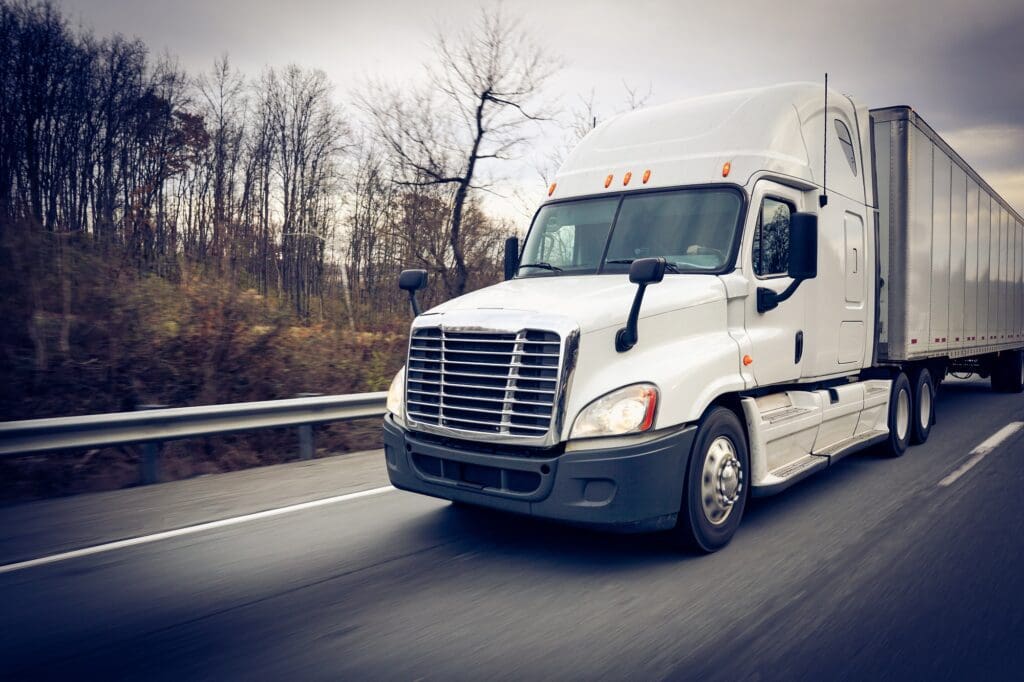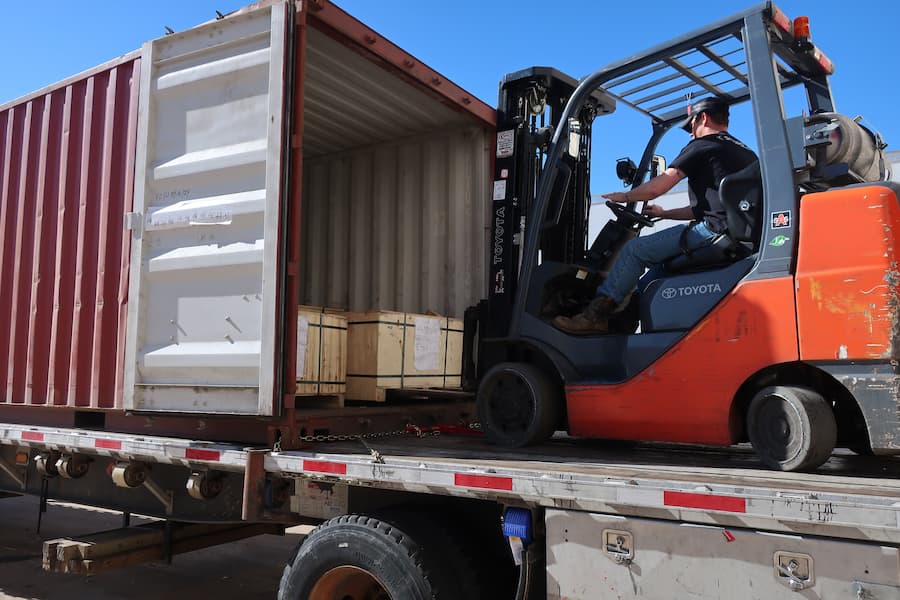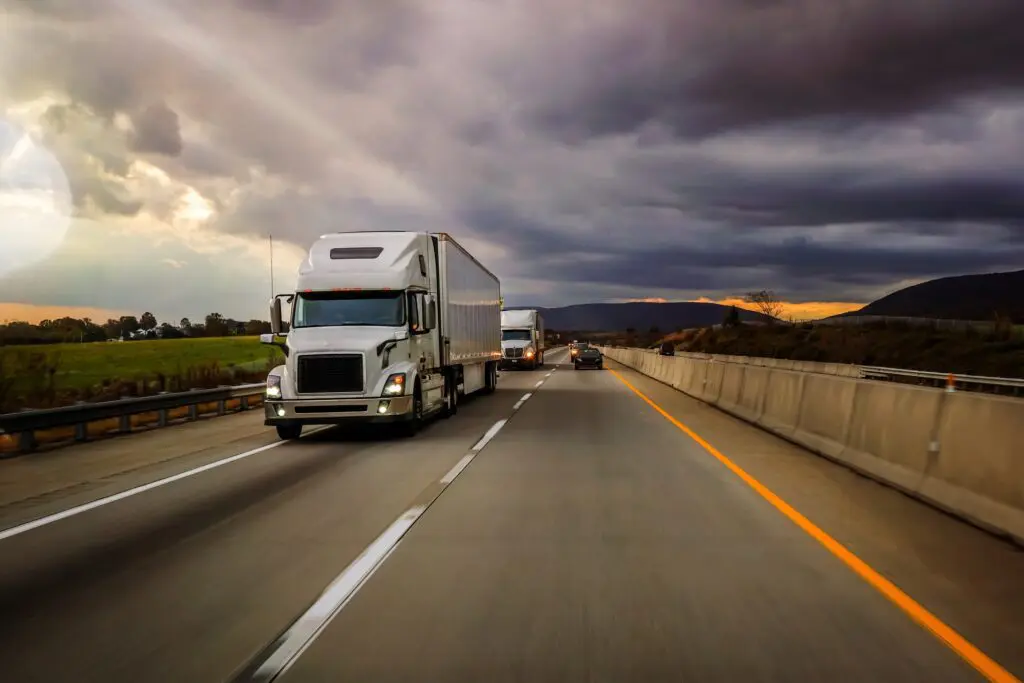The future is here. Autonomous trucks are on the road. Soon, there will be squads of driverless semis zooming down the highways, imperiling auto drivers, cyclists, and pedestrians, and stealing jobs from thousands of truckers.
How much of that statement is true? Some, but not all.
The ETA for Self-Driving Trucks
Yes, the self-driving truck future is already here.
This past February, a Peterbilt tractor retrofitted with sensors and self-driving software drove from Jacksonville, Fla., to Los Angeles along Interstate 10. The test was run by trucking startup Embark, which in partnership with Ryder trucks, has already brokered an autonomous delivery deal with Electrolux and plan to be running 40 trucks full of Frigidaire refrigerators along a route from El Paso to Los Angeles.
Uber, which acquired the self-driving technology company, Otto, began running autonomous trucks on Arizona highways this spring.
Working with German electric vehicle startup e.GO Mobile, European auto parts maker ZF has created the e.GO Mover, a partly autonomous shuttle-like vehicle meant for commercial deliveries or ride-hailing. They already have contracts in 72 cities and plan to build 400 e.GO Movers in 2019.
Waymo announced in March that it will begin using its autonomous trucks to make deliveries to Google’s Atlanta-based data centers.
Beijing- and San Diego-based TuSimple is already operating a test fleet of autonomous trucks in Chinese ports, and is currently testing its trucks in Arizona.
Though all of these autonomous trucks are up and running now, they are still in the process of being tested. “We have a phased process that we’re following,” says Chuck Price, Vice President of Product at TuSimple. “Our plan is to build up to 25 vehicles in the U.S. and 25 vehicles in China. This fleet will be operated by us with our test drivers behind the wheel.”
So when will robotic trucks be “business as usual?” In 2017, the MIT Technology Review predicted they’d be generally available in 5 to 10 years. Paul Rosa, senior vice president of procurement and fleet planning for Penske Truck Leasing thinks it will take longer: “15, 20, 30 years,” at least for completely autonomous trucks.
That timeline could shrink, though. In a recent Morgan Stanley Research report, trucking industry analyst Ravi Shanker said, “We continue to believe that intensifying competition between startups, tech giants and incumbent [manufacturers] could pull forward the commercialization timeline for both autonomous and electric trucks.”
Platooning Prospects
As for squads of self-driving semis, that’s a real possibility. “Platooning” is a form of truck travel where several rigs closely follow each other in order to fuel consumption by diminishing drag. The idea has recently become a reality thanks to self-driving technology—including adaptive cruise control, forward collision warning technology, and vehicle-to-vehicle communication (you can read more about platooning here[LINK]). As of now, platooning tests use drivers in all vehicles, but it’s possible, even likely, that in the future only the lead truck will have a human driver.
Platooning, too, is still in a test phase, but the future is looking bright—and near. “I have a couple of bets with some of my colleagues that we might see this before we see automated robo-taxis in downtown Manhattan,” said Jason Roycht, vice president of commercial vehicles at Robert Bosch LLC. It’s not just fuel savings that are pushing platooning to the forefront of the autonomous vehicle revolution: Proponents believe that platooning could actually improve highway safety by drastically reducing braking time. “The communication between the trucks is almost instantaneous,” says Volvo Trucks spokesman Brandon Borgna.
Self-Driving Safety
It seems counterintuitive that a driverless vehicle could be safer than a human-controlled one—until you look at the reasons behind accidents. More than 90 percent of all accidents are caused (at least in part) by driver error, and approximately one in seven fatal truck accidents is due in part to driver fatigue. And though the few accidents involving self-driving cars have been widely publicized, the reality is much more hopeful: Over 7 years and millions of miles, Google’s self-driving cars have had just 20 crashes.
Even so, no one really thinks that self-driving technology can completely and safely replace experienced truck drivers—and most don’t plan to. Most autonomous vehicle advocates see self-driving trucks as incredibly useful, but in limited, specific situations. For example, Volvo plans to promote its completely autonomous trucks to private locations like mines and ports. “On public roads, we’ll use the technology to support the driver, not to replace the driver,” says Carl Johan Almqvist, head of product safety at Volvo Trucks.
The Forecast for Drivers
The coming truck robot apocalypse is big news, with articles warning that truck driving jobs will become a thing of the past, as many as “14,000 truckers losing their jobs a month” (Wendell Wallach “A Dangerous Master: How to Keep Technology from Slipping Beyond our Control”). No wonder drivers are nervous. But there’s an interesting fact behind the current media storm: most of the doomsayers are outside the trucking industry. And trucking industry insiders vehemently disagree with the idea of massive future layoffs. “It’s absolutely ludicrous,” said Chris Spear, CEO of the American Trucking Associations. Joe Rajkovacz, of the Western States Trucking Association, agrees: “There are so many things a driver does. I just don’t believe that you’re ever going to see, at least in the world that’s imagined right now, this fully autonomous truck without anyone in it.” And Alden Woodrow, the product lead for self-driving trucks at Uber says, “We’ve been disappointed over the last year to see a lot of stories about how self-driving trucks are going to be this huge problem for truck drivers. That’s not at all what we think the outcome is going to be.”
In fact, Uber thinks that the new wave of robo-trucks could actually lead to more jobs. Using Bureau of Labor Statistics data, they created a model to support the idea.
“The more self-driving trucks you have and the higher utilization they have, the more jobs it creates,” says Woodrow.
Apocalypse or Opportunity?
To many in the industry, the self-driving truck scenario looks like a pro, not a con. But no matter what the future brings, at Next Exit Logistics, we earn the trust of our clients with efficiency, transparency, and security (read our testimonials). In addition, we understand how to handle freight services for unusual, oversize, or overweight shipments and are certified to arrange the shipment of hazardous materials. To learn more about our services, call Next Exit Logistics at 866-624-2661 or contact us via email.




